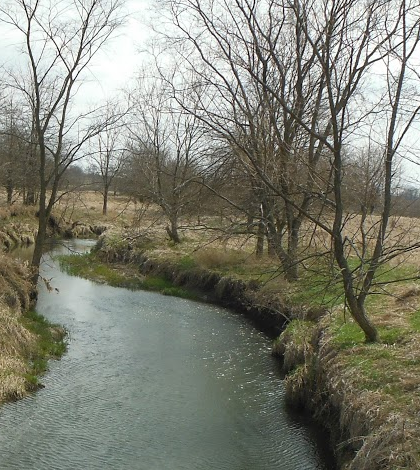Stream Monitors To Aid Drinking Water Management In Bloomington, Illinois

Lake Bloomington is an important source of drinking water for the residents of Bloomington, Illinois. But when rain storms pour down on the agriculturally dominated area, city managers have to deal with a rise in nitrogen in the water that exceeds standards set by the U.S. Environmental Protection Agency. This is typically done by taking water from the closeby Evergreen Lake to use as drinking water instead.
That sort of last-second reaction to the issue isn’t really what managers with the city prefer. A better way would be to have data before such storm events occur that would let them know earlier that it was time to start withdrawing from Evergreen Lake instead.
To that end, the City of Bloomington is partnering with researchers at Illinois State University to set up two monitoring stations on the prominent tributaries running into each lake. For Lake Bloomington, that’s Money Creek. It’s Six-Mile Creek for Evergreen Lake.
Each monitoring station will be deployed on bridges that span the tributaries, and outfitted with pressure transducers for measuring water depth, as well as automated samplers that can collect samples more or less often depending on streamflows.
Data from the stations will be complemented by others gathered by researchers who go out and collect stream samples using grab samplers.
“We know that it’s mostly sediments and nitrogen that moves downstream during storm events. We want to give the city a heads-up about the changes in those conditions,” said Catherine O’Reilly, an associate professor in the Department of Geography – Geology at the university. “Another reason is that Illinois as a state needs to reduce nutrient loads.”

Students enrolled in a field and lab methods class measure discharge at Six Mile Creek. The gentleman with the beard in the center is Rick Twait. The lady on the left is Laura Hanna, who did a thesis project on the streams. (Credit: Catherine O’Reilly / Illinois State University)
Illinois is a member state of the Mississippi River / Gulf of Mexico Hypoxia Task Force that is working to reduce nutrient loads making it to the river and ultimately to the Gulf where they add to the recurring hypoxia problem. To meet the reductions that it has agreed upon, O’Reilly says that Illinois needs to reduce the nutrient concentrations it adds to the river by 45 percent. The two new monitoring stations will help to gather baseline data that will aid reduction efforts in the Bloomington area.
The bulk of that data will focus on nitrogen and phosphorus, but more so on nitrogen because its levels are more concentrated in the two lakes. Those nutrients will be assessed by chemical means back in the lab. But researchers are also interested in turbidity levels because they tell the story of sediments in the drinking water reservoirs.
“These are reservoirs and they can fill in, so the city is interested in how much sediments move down these streams,” said O’Reilly.
In addition to providing data for the city to use in better managing drinking water needs, plans are for the stations to also share their measurements with the general public. O’Reilly says a website is in the works to make it easy for anyone to access the data.
“So the public can see how deep the streams are, how turbid is the water, then we’ll post chemical updates after analyzing them,” said O’Reilly. “We hope that having access to real-time data will engage the public so more people are engaged in regional conservation efforts.”
O’Reilly plans to integrate data from the stations into class lessons. Undergraduate and graduate students doing research will also likely use the data in school projects. But they will have to wait until this upcoming spring, when the stations are set to be deployed on the two tributaries.
The city will also benefit from the school projects because, in addition to getting the valuable data, there won’t be a need to pay overtime to city employees to manage the stations and go out to collect samples.
“The (City of Bloomington’s) Superintendent of Drinking Water, Rick Twait, has always been here to give students real-world experience,” said O’Reilly. “We share similar goals for the types of experiences that we want students to have.”
Top image: Six Mile Creek, looking up from the sampling location. (Credit: Rick Twait / City of Bloomington)




0 comments